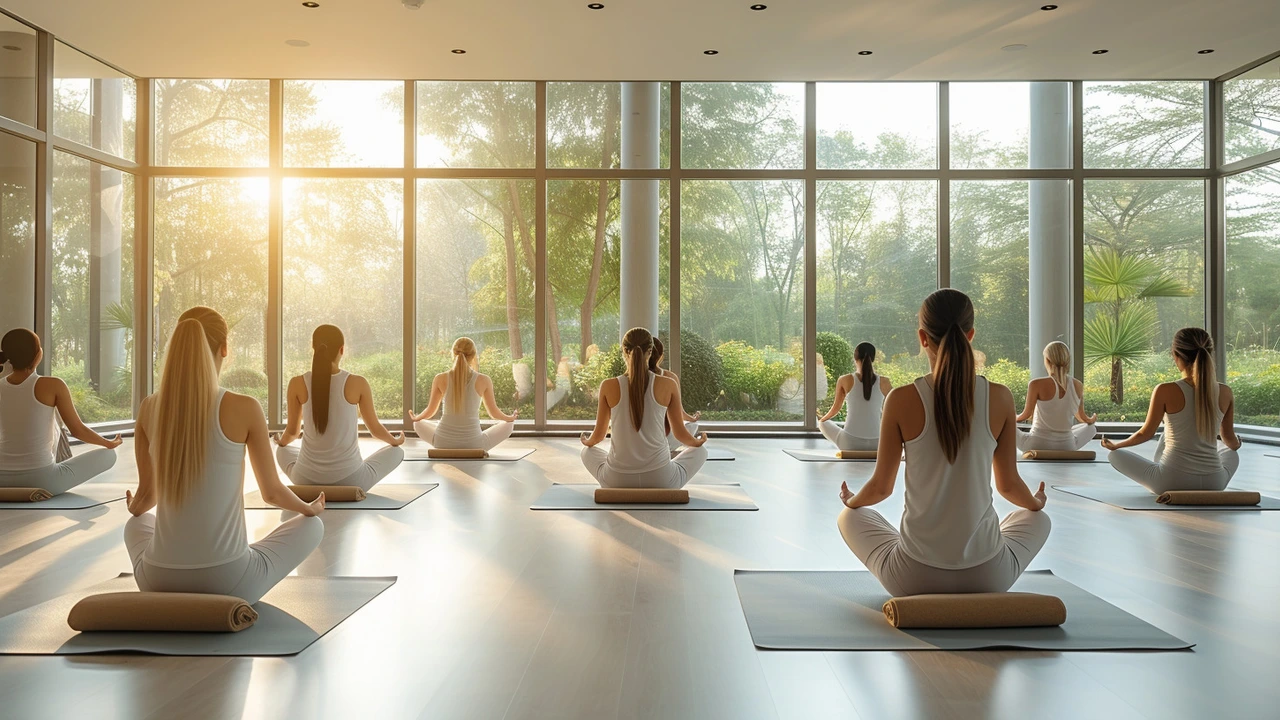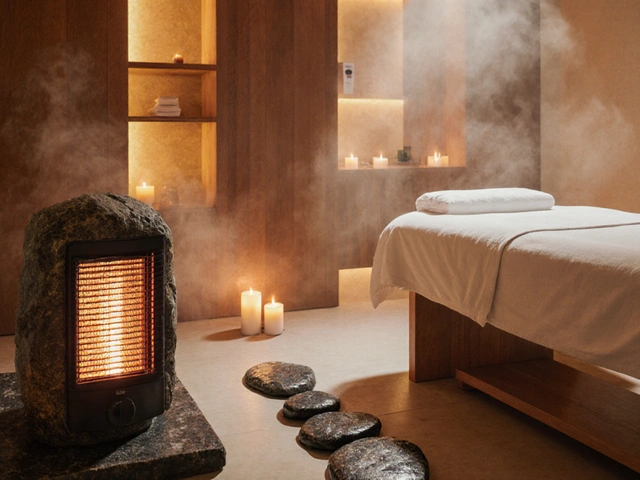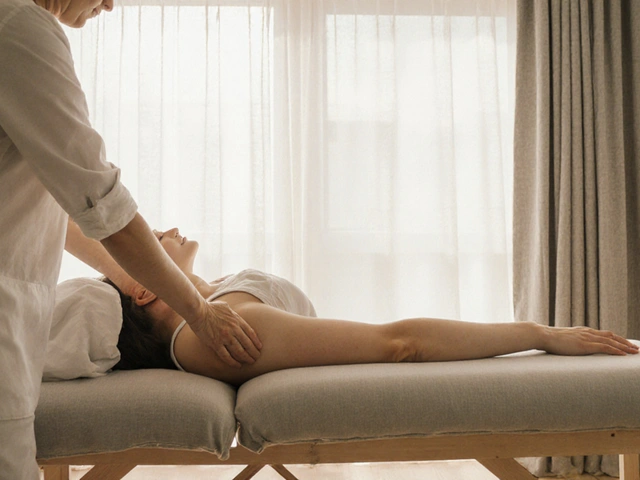Art of Stretching: Simple, Smart Moves You Can Use Today
Stretching isn't just for athletes. A few focused moves each day can ease back pain, loosen tight hips, and make standing or bending feel easier. The key is to stretch the right way — with control, steady breathing, and attention to how your body really feels. Below you’ll find quick routines, safety tips, and where to turn when stretching alone isn’t enough.
Quick 5-minute routine you can do anywhere
Try this short, practical sequence first thing in the morning or after long sitting. Hold each move 20–30 seconds, repeat once if you have time. Breathe slow and avoid bouncing.
- Neck rolls: sit tall, drop your chin, and gently roll side to side to ease neck tightness. - Shoulder opener: clasp hands behind your back and lift slightly to open the chest. - Seated hamstring stretch: one leg extended, hinge at the hips with a flat back; stop when you feel a comfortable pull. - Hip opener (figure-4): cross ankle over opposite knee and lean forward to target glutes. - Cat-cow: on hands and knees, alternate arching and rounding the spine to restore mobility.
These moves target common tight areas. If a stretch causes sharp pain, stop and try a gentler version or shorter hold.
How to stretch smarter — not longer
Focus on quality. Move into a stretch slowly, breathe, and look for a steady, mild tension — not pain. Dynamic stretches (controlled movement) work better before activity; slow, passive or PNF-style holds help after exercise. Combine stretching with gentle therapies covered on this site — Feldenkrais and Ortho-Bionomy teach movement patterns that improve control, while trigger point work and acupressure can release stubborn knots that limit range.
If you have chronic issues, pick approaches that match your need. For posture and long-term change, read our pieces on Hellerwork or Rolfing for structural alignment. For pain relief, try trigger point massage or Ortho-Bionomy techniques. For relaxation plus mobility, hybrid sessions like Amma or Lomi Lomi can help muscles let go.
Frequency matters more than duration. Three short sessions a day beat one long session once a week. Keep stretches gentle and consistent — small daily gains add up fast.
When to see a pro: if stretches increase sharp pain, cause numbness, or if you have a recent injury, surgery, severe scoliosis, or a tendon contracture. For persistent stiffness or complex pain, our guides on contractual tendon release, palliative massage, and Rolfing for scoliosis explain what professionals can offer and what to expect during recovery.
Want more specific help? Check our guides on Feldenkrais, trigger point massage, and Ortho-Bionomy for targeted routines and therapist tips. Stretching works best when it fits your body and daily life — start small, be consistent, and tune into how your body responds.

The Art and Science of Fascia Stretching
Hey there, in this post, I'm diving into the fine art and scientific approach of fascia stretching. We'll look at how this technique can improve flexibility, enhance muscle function, and contribute to overall wellbeing. Brace yourselves for a journey that blends aesthetics and physiology into a seamless health discipline. If you're curious about the ins and outs of fascia stretching, this piece is for you – the awesome science and elegant artistry of stretching await!
Categories
- Health and Wellness (148)
- Alternative Therapies (86)
- Massage Therapy (40)
- Travel and Culture (15)
- Beauty and Skincare (9)
- Holistic Health (8)
- Health and Fitness (5)
- Spirituality (5)
- Other (2)
- Personal Development (2)
Popular Articles

The Proven Benefits of Sports Massage for Athletes
Mar, 15 2025


